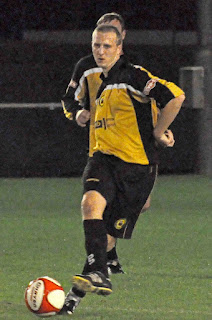When English local government was reorganised in 1974, it gave rise to knotty questions about what to call some of the new areas, with two or three previously independent towns grouped into one district. In some places small villages, like Tandridge or Tendring, that gave their names to Saxon hundreds, were rescued from obscurity to become the names of the new districts. In others, geographical descriptions were used, like Calderdale, or Tameside.
Trafford brings together Stretford, Urmston, Sale and Altrincham, and crosses an historic county boundary. Its name comes from a ford across River Mersey on the Roman Road between Deva Victrix (Chester) and Mancunium (Manchester), a route largely used by the A56. The name was already well known, from Old Trafford cricket and football grounds, and from Trafford Park, Europe's largest purpose built industrial estate. These in turn were named after the de Trafford family, who owned land in the area, and took their name from the location. The rest of the borough seemed content to ignore the fact that the name is Norman French for Stretford.
Trafford FC (founded as North Trafford - the part of the borough historically in Lancashire) play in Flixton at Shawe View, a compact ground surrounded by trees, which, whilst they are in leaf, provide a good windbreak. A couple of branches could have done with being lopped near one of the floodlight pylons, as they seemed to be casting a shadow on the pitch. A couple of darker patches were closer to the middle of the pitch than I would normally expect, and one team was playing in white, with the other with a kit including black. So, all in all, a lighting challenge.
Getting a decent picture in these circumstances needs a certain amount of trial and error. A position behind the goal is not much use, there are too few of the better lit parts of the pitch in range. I stuck with the 1/200s speed I usually use under floodlights, and tried not to extend the zoom lens beyond 200mm, which increases the maximum aperture. It is not a large increase, f/5.3 instead of f/5.6, but it seems to make a difference, producing a result that, after enhancing the lighting, is a bit grainy, but useable, such as this one of Cables' Chris Rowntree.
As is often the case, when the action is close enough, and in a good patch of light, we can get a result that is quite clear after an appropriate lighting enhancement, such as this one featuring Cables' Ashley Ruane.
Apologies to the Trafford player who does not get a mention, I am terrible with names - it takes me about 3 weeks of their playing for us to start to recognise our own players!
How much grain can be tolerated in the picture will depend to a certain extent on the size at which is is to be shown.
This example of Cables' goalkeeper Michael Langley looks reasonably crisp at a small size on this page, but I left it out of the selection for the slide show, as it was far too grainy when viewed at full screen size - if you click on the picture, you should see a larger image to demonstrate what I mean. There are factors I use selecting pictures to show, such as trying to show all our players, looking out for the better images, etc., but often in an evening game, these take second place to finding pictures with enough light.
The photos that made it through to the slide show can be seen here.



No comments:
Post a Comment